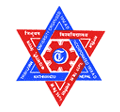New TU academic calendar likely within a month

Kathmandu:The oldest varsity in the country—Tribhuvan University (TU)—has come up with a new academic calendar after the donor agencies, including World Bank, threatened to stop grant if it failed to do so.
A team led by TU rector Soorya Lal Amatya drafted the calendar, which will come into effect once the executive council endorses it.
TU has been holding consultations with stakeholders, including student and professor unions, seeking their inputs. Amatya said that the draft will be presented for approval after holding the final consultations with all the
deans and examination chiefs of the university. “The calendar will come to effect within a month,” he said.
The new move aims at starting new session of Bachelor’s First Year from September, conducting examinations between March and July and publishing the results by November.
Similarly, the new session of Master’s First Year will kick off from June and exams will be held in April. If the calendar is followed properly, the results will be published within three months after examination.
The draft has also proposed to conduct 155 classes at all levels in one academic session and has made mandatory for at least 150 classes.
As per the TU syllabi, every non-technical subject from intermediate to post-graduate level requires 150 classes to complete the course, but constituent colleges hardly run 100 classes in one academic year. “Such a practice will come to an end after the new calendar is endorsed,” Amatya said, adding, “No college can run below than 150 classes, they will be liable to punishment if they found flouting the calendar.”
According to TU records, Ratna Rajya Laxmi Campus conducted 90, 95 and 85 classes of Bachelor’s Third Year and Intermediate first and second year, respectively.
The colleges, including Nepal Commerce Campus, Patan Multiple Campus, Tri-Chandra, and some others, also hardly conduct 90 classes in one session. The colleges’ apathy towards meeting the course requirements has long been reflecting in students’ performance.
source: The Kathmandu Post,12 Oct, 2011
Posted on: 2011-10-12































